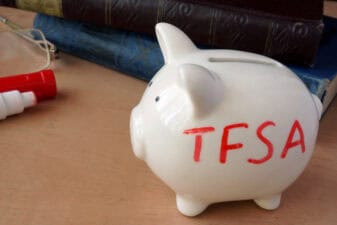As 2024 winds down, it’s time for parents with a Registered Education Savings Plan (RESP) to focus on an important deadline: December 31, 2024. This is the last day to contribute for the year and take advantage of the Canada Education Savings Grant (CESG). The CESG is a golden opportunity, with the government matching 20% of your annual RESP contributions up to $500 per year per child. To get the full grant, you need to contribute at least $2,500 for the year. If you haven’t yet reached that amount, now’s the time to act. Every dollar you leave on the table is a missed chance to grow your child’s education fund.
A powerful tool
RESPs are not just a savings account. These are powerful tools for funding your child’s post-secondary dreams. Contributions aren’t tax-deductible, but the real magic happens with the tax-deferred growth inside the RESP. Any earnings and grants remain untaxed until they’re withdrawn, at which point they’re taxed in the hands of the student. And since students usually have little to no income, the taxes owed are often negligible or non-existent. In short, RESPs maximize every dollar you save and invest, making them one of the smartest ways to prepare for future education expenses.
With December 31 fast approaching, it’s crucial to check your RESP contributions and ensure you’ve hit the $2,500 mark for each child. If you haven’t, consider acting now to maximize your CESG eligibility. The government grant is essentially free money, and when combined with the growth potential of investments, it’s a recipe for a well-funded education plan.
When it comes to investing within an RESP, you want options that combine growth potential, diversification, and ease of use. That’s where exchange-traded funds (ETFs) shine. A perfect option is iShares Core Growth ETF Portfolio (TSX:XGRO).
Why XGRO
XGRO is a growth-focused ETF designed to deliver long-term capital appreciation. Its portfolio consists of approximately 80% equities and 20% fixed income, giving it a tilt toward growth while maintaining some cushion against volatility. For parents looking to build an RESP, this type of balanced growth strategy is ideal, particularly when your child is years away from needing the funds.
XGRO’s performance is another reason it stands out. As of writing, it has delivered an impressive year-to-date return of 19.90%, showcasing its ability to capitalize on a favourable market environment. Even when you look at its one-year performance, it has gained 23.85%, reflecting its robust portfolio design and smart asset allocation. Past results don’t guarantee future returns but highlight how well XGRO has navigated various market conditions.
Strong features
One of the best features of XGRO is its global diversification. The ETF holds a mix of equities from different sectors and regions, which spreads out risk and increases opportunities for growth. Its portfolio includes U.S. and international stocks alongside Canadian equities, ensuring that your RESP benefits from a wide range of market dynamics. And because XGRO is automatically rebalanced, it continuously maintains its target asset allocation, so you don’t have to worry about manually adjusting the mix.
Beyond its performance and diversification, XGRO is incredibly cost-effective. With a management expense ratio (MER) of just 0.18%, the ETF keeps fees low. This means more of your investment stays in the RESP to grow over time. For parents, every penny saved on fees is a penny that can go toward your child’s tuition, books, or living expenses down the line.
Foolish takeaway
Timing matters with RESPs. As your child grows older and the timeline for withdrawals shortens, you might want to shift from growth-oriented investments like XGRO to more conservative options. But while your child is young, investing in a growth ETF like XGRO gives your RESP the best chance to maximize returns. The earlier you start, the more time your money has to grow, thanks to the power of compounding.

 Don't let our Poutine Day offer get cold: 65% off Stock Advisor ends at midnight!
Don't let our Poutine Day offer get cold: 65% off Stock Advisor ends at midnight!








